Where the Aegean meets the Mediterranean, Turkey’s magnificent coastline plays host to some of the world’s most compelling landscapes. Each bay and peninsula tells its own story across more than 8,000 kilometres of shore, from the dramatic mountain-backed coves of the Turquoise Coast to the protected coves of the Aegean.
Here, millennia of civilization have shaped a coast where ancient ruins emerge from crystalline waters, and traditional gulets still ply routes once navigated by Byzantine traders. From the wind-carved inlets of the Datça Peninsula to the sophisticated marinas of Göcek, these remarkable shores draw visitors year-round with a rare blend of natural beauty, living history, and vibrant coastal culture.
With all that in mind, and with a steely focus on the listicle format kicking in, here are some of Turkey’s best beach destinations.
The Turquoise Coast
Antalya: The Gateway to the Mediterranean
The ancient harbour city of Antalya presides over a coastline that would be remarkable even without its archaeological riches. Here, the Taurus Mountains plunge dramatically into the sea, creating a string of intimate coves and sweeping bays that have drawn travellers since Roman times.
The city’s Lara Beach district has evolved into an sophisticated enclave of international resorts, yet manages to retain its essential Turkish character. Local families still gather at sunset for traditional çay in the beachfront gardens, while fishing boats dock at dawn with the day’s catch. Beyond the city limits, the coast road winds past the ruins of Phaselis, where three ancient harbours lie half-submerged in crystalline waters.
In contrast, Konyaaltı Beach offers a more urbane experience. Antalya holidays tend to revolve around the promenade, the city’s culinary heart, where restaurants serve refined interpretations of Aegean cuisine. Reserve a table at legendary 7 Mehmet, which has been open for the best part of the century and whose menu spans some 650 dishes. The beach itself, a striking blend of dark pebbles and turquoise water, stretches for seven kilometres beneath the mountains.
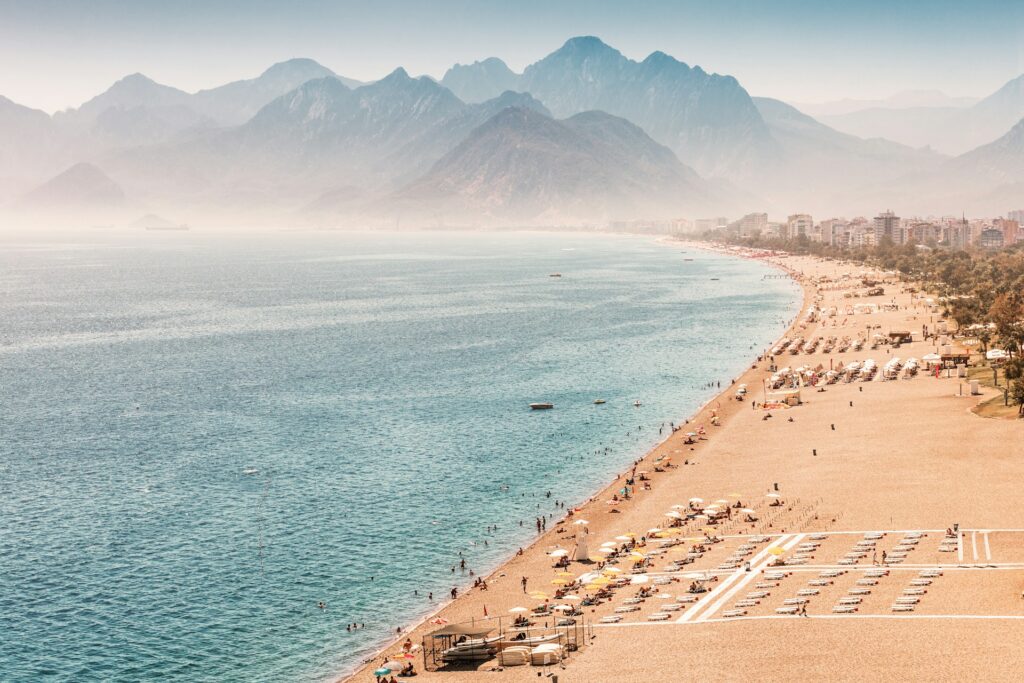
The Hidden Coast Of Kaş
South of Antalya, the resort town of Kaş clings to cliffs above the Mediterranean. Unlike its busier neighbours, Kaş has preserved its traditional character and remains a serene spot to sojourn – whitewashed houses draped in bougainvillea line narrow streets that wind down to a working harbour. The town’s beaches are small but spectacular, particularly Kaputaş Beach, where a golden strand is framed by towering limestone cliffs.
The surrounding coastline reveals hidden coves accessible only by boat or foot. Hire a traditional gulet from Kaş harbour to explore these secluded spots, including the submerged ruins of Kekova, where ancient Lycian tombs emerge from crystalline waters.

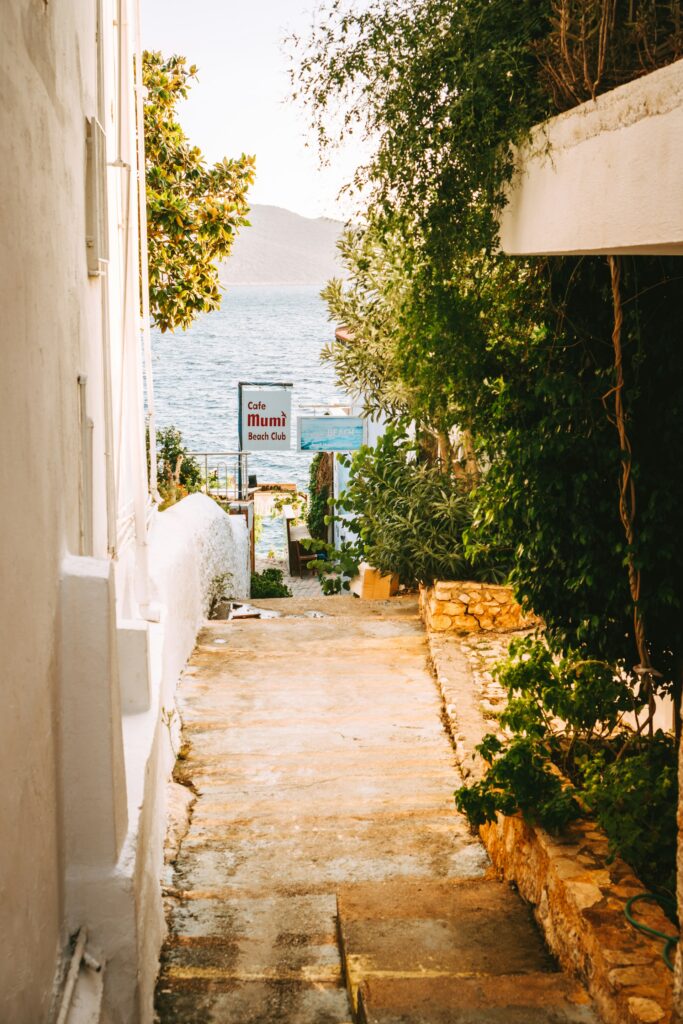
The Aegean Coast
Fethiye’s Natural Wonders
The Fethiye region represents the apotheosis of Turkey’s coastal beauty. The famous Blue Lagoon at Ölüdeniz appears in countless travel photographs, yet no image can capture the startling gradients of blue in its waters or the way the lagoon changes colour throughout the day. The protected status of the lagoon has preserved its pristine condition, though this means development is restricted to the adjacent resort town.
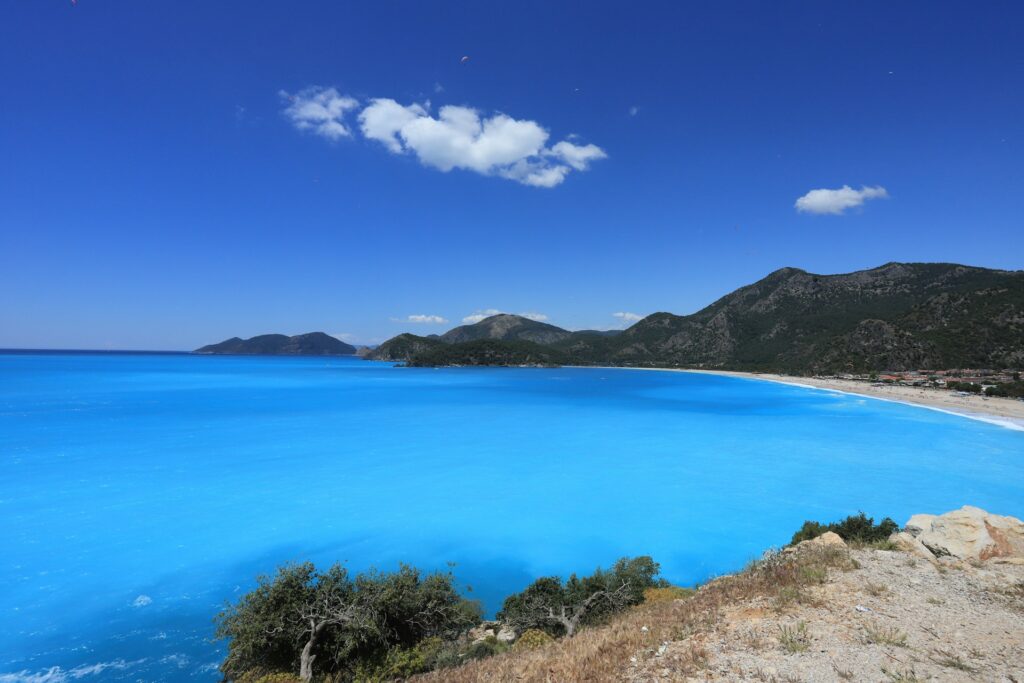
Less visited but equally striking is Butterfly Valley, named for the endemic Jersey tiger butterflies that gather in its narrow gorge. Access requires either a boat journey from Ölüdeniz or a challenging descent down the cliffs, but the reward is a pristine beach framed by 350-metre rock walls. Stay at the valley’s basic but charming eco-camp to experience dawn over the Mediterranean in splendid isolation.
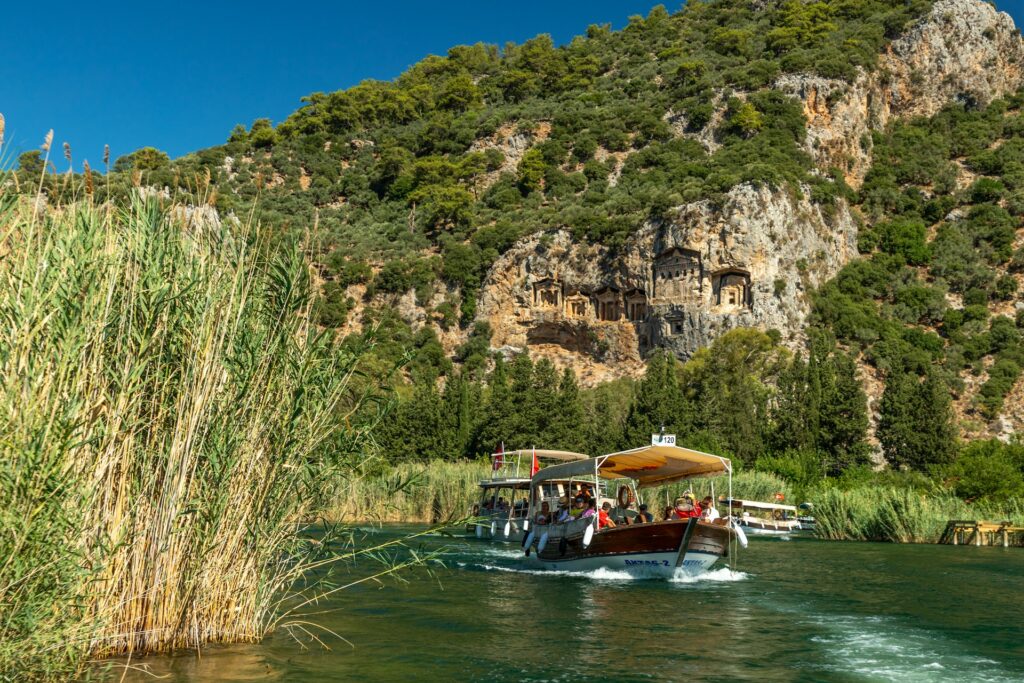
The Sophisticated Shores Of Bodrum
The Bodrum Peninsula has long attracted Turkey’s creative class, from writers and artists to musicians and architects. This cultural heritage manifests in thoughtfully designed hotels and restaurants that complement rather than compete with the landscape. The peninsula’s western shores offer the finest beaches, particularly at Türkbükü, where sophisticated beach clubs like Maçakizi have elevated coastal relaxation to an art form.
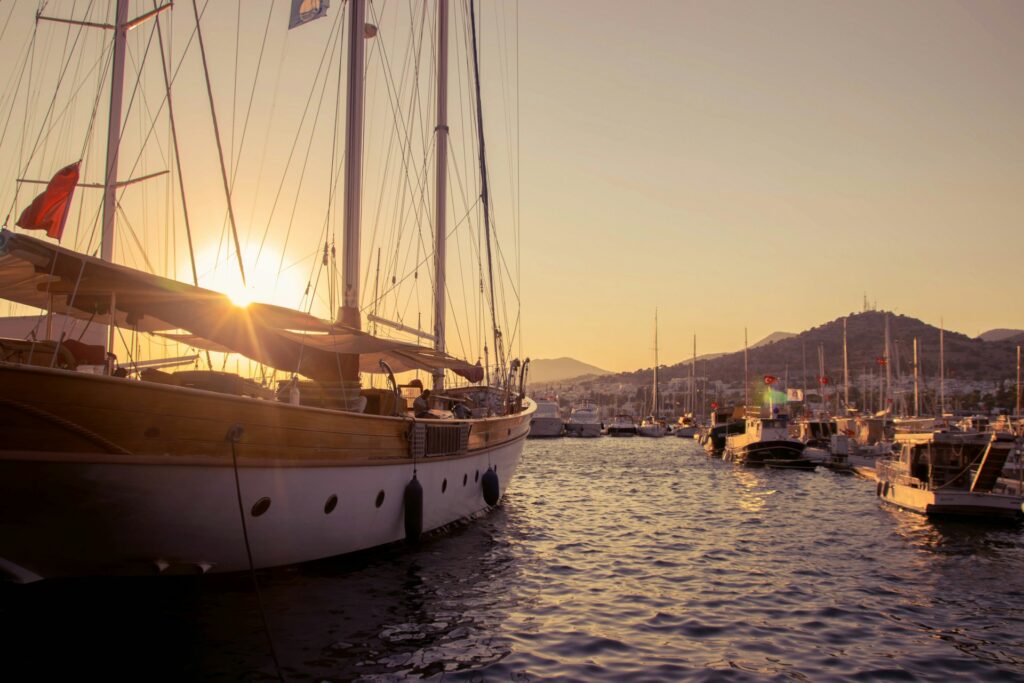
Bitez Beach, a sweeping bay of coarse golden sand, presents a more traditional face of the peninsula. Here, family-run pensions sit alongside elegant boutique hotels, while traditional gulets bob in the harbour. The beach’s orientation makes it a renowned windsurfing destination, particularly in the afternoon when the meltemi winds provide ideal conditions.
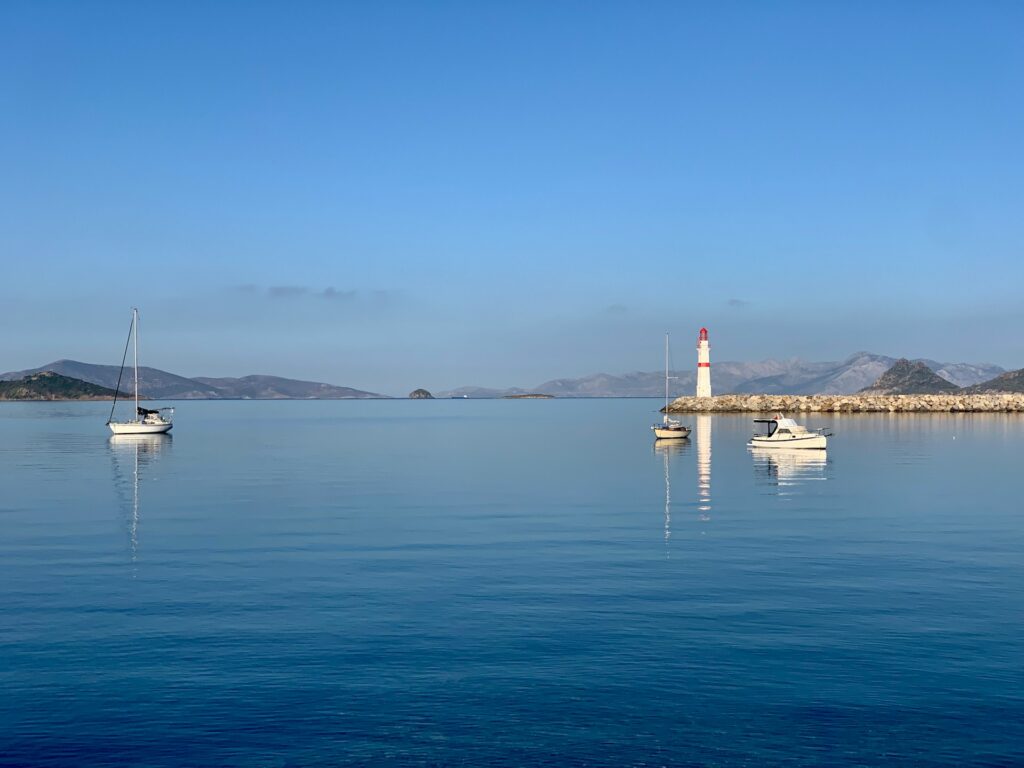
The Untamed Datça Peninsula
The narrow Datça Peninsula remains one of Turkey’s least developed coastal regions, despite its spectacular beauty. The ancient Greeks believed the peninsula’s air had healing properties, and there’s certainly something therapeutic about its wild landscapes and crystal-clear waters. The peninsula’s southern coast harbours numerous small beaches, including Palamutbükü, where simple restaurants serve exceptional seafood mere steps from the water.
At the peninsula’s tip lies Knidos, an ancient city scattered across a dramatic headland. The city’s two harbours, one on the Aegean and one on the Mediterranean, testify to its historical importance. Today, these same harbours provide shelter for yachts, while the nearby beach offers swimming in waters of exceptional clarity.
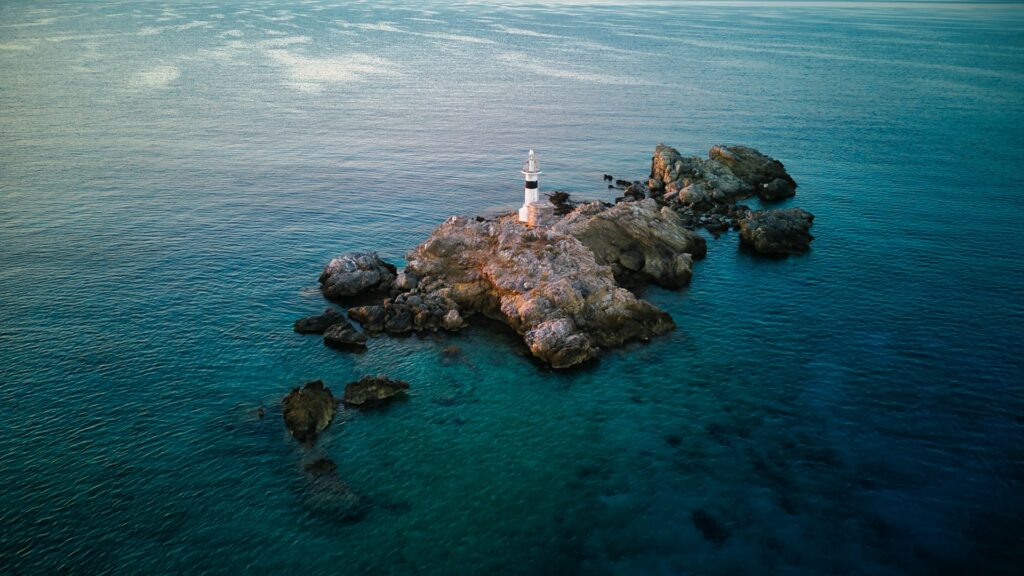
The Evolution Of Turkish Coastal Culture
Turkey’s beach culture has evolved significantly over recent decades. Traditional fishing villages have developed into sophisticated resorts, yet many maintain their authentic character. Local life still revolves around the kahvehane (coffee houses) and weekly markets, where fishmongers and farmers sell their produce. The most successful resorts have managed to integrate international tourism with local traditions, creating spaces where visitors and residents coexist harmoniously.
The country’s approach to coastal development has also matured. New regulations protect against overdevelopment, while restoration projects have revitalised historic buildings into boutique hotels and cultural spaces. This sustainable approach ensures these magnificent shores will continue to enchant visitors for generations to come.
The Future of Turkey’s Coast
Turkey’s beach culture has evolved significantly over recent decades. While holidays to Turkey are perfect for beachgoers, the country offers a deeper coastal experience that sets it apart from other Mediterranean destinations. Traditional fishing villages have developed into sophisticated resorts, yet many maintain their authentic character.
Local life still revolves around the kahvehane (coffee houses) and weekly markets, where fishmongers and farmers sell their produce. The most successful resorts have managed to integrate international tourism with local traditions, creating spaces where visitors and residents coexist harmoniously.

When To Visit
The Turkish coast enjoys a classic Mediterranean climate, with long, hot summers and mild winters. The premium months for beach visits span from late May through early October, though high summer can be intensely hot. September offers particularly appealing conditions, with warm seas and cooler evenings, plus the bonus of fewer visitors. Winter brings its own charm, with dramatic storms and cosy tavernas serving seasonal specialities like hamsi (Black Sea anchovies) and wild mushrooms.
Whichever way you play it, make sure you bookend your trip exploring the history and culture of Istanbul; an opportunity not to be missed.





